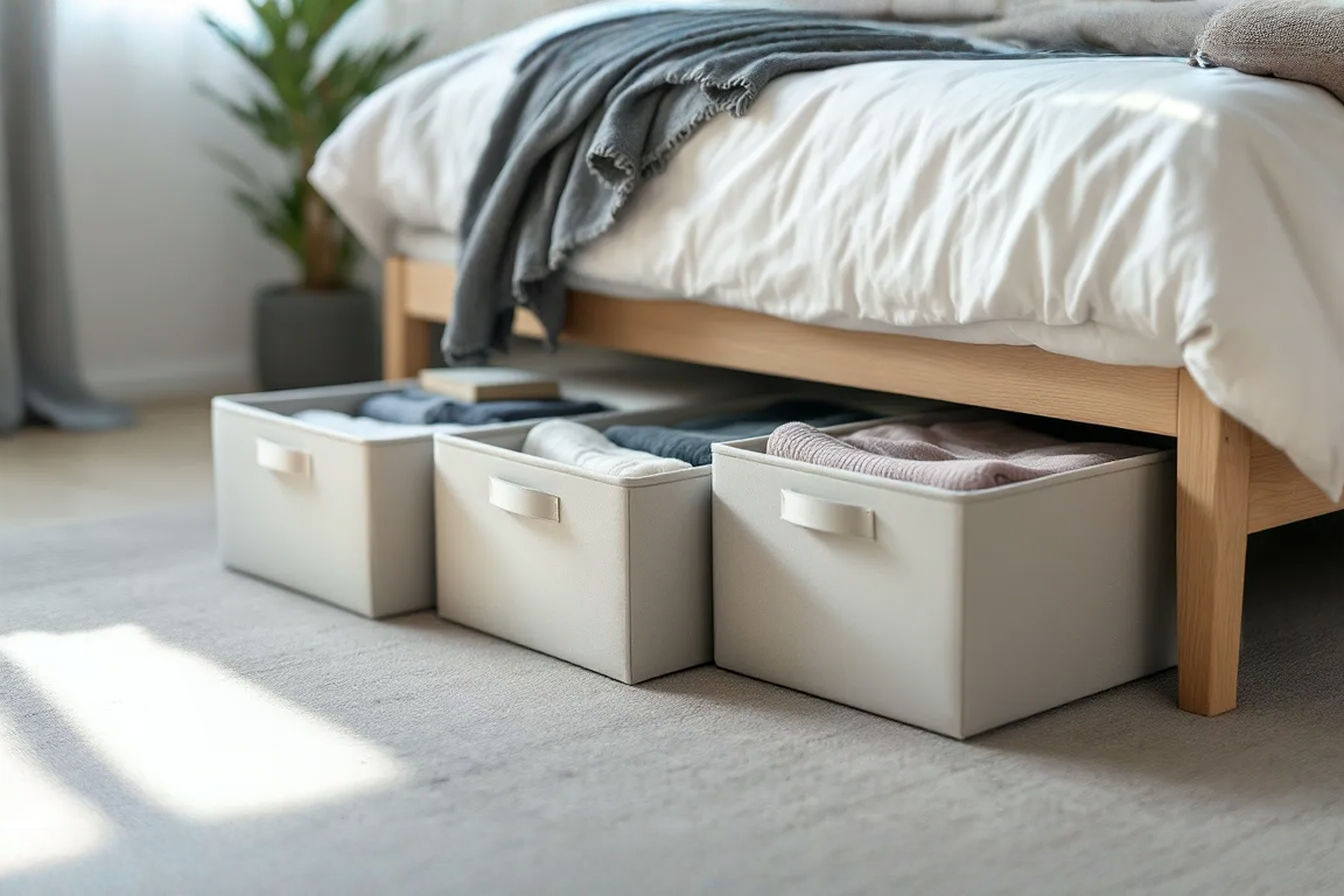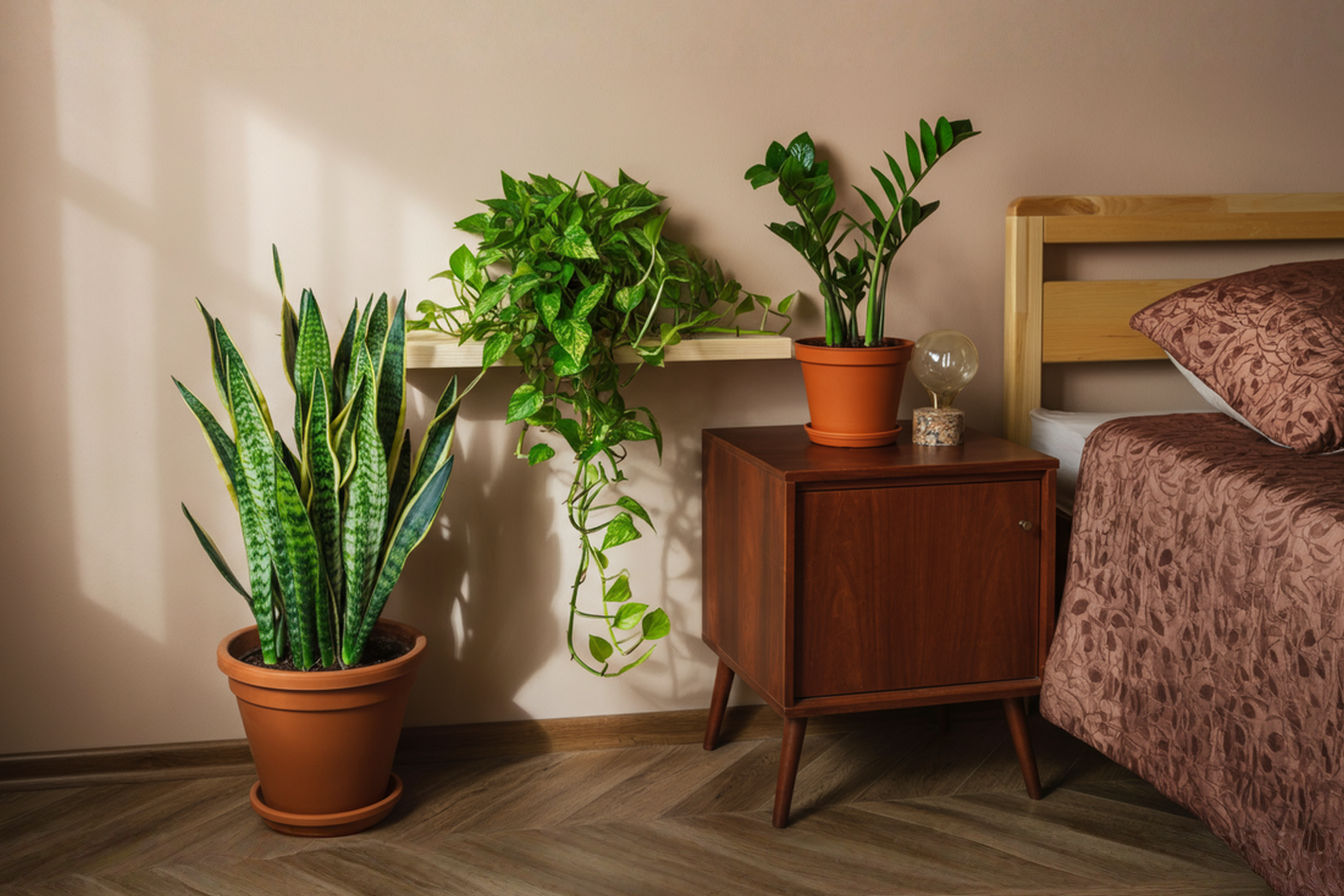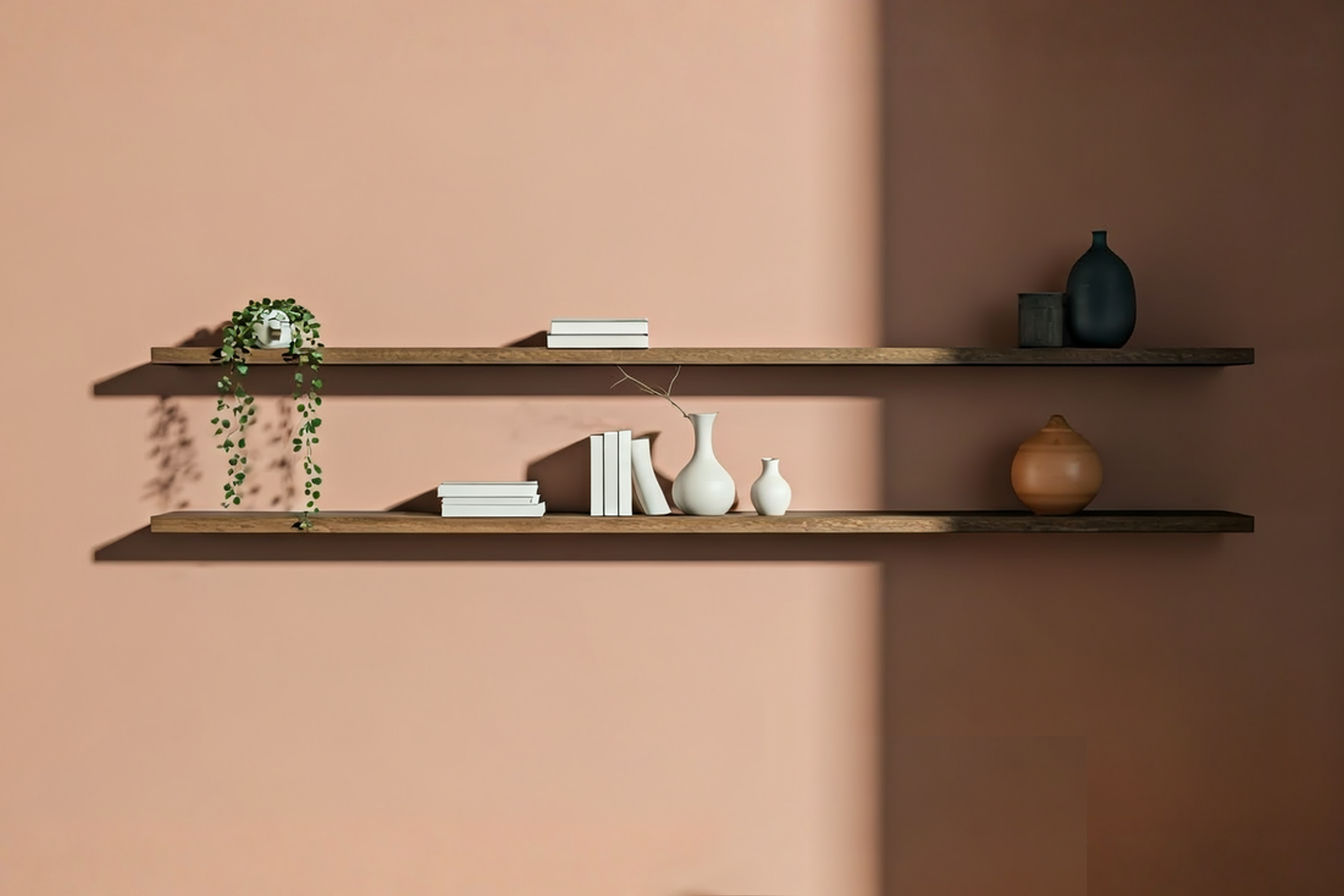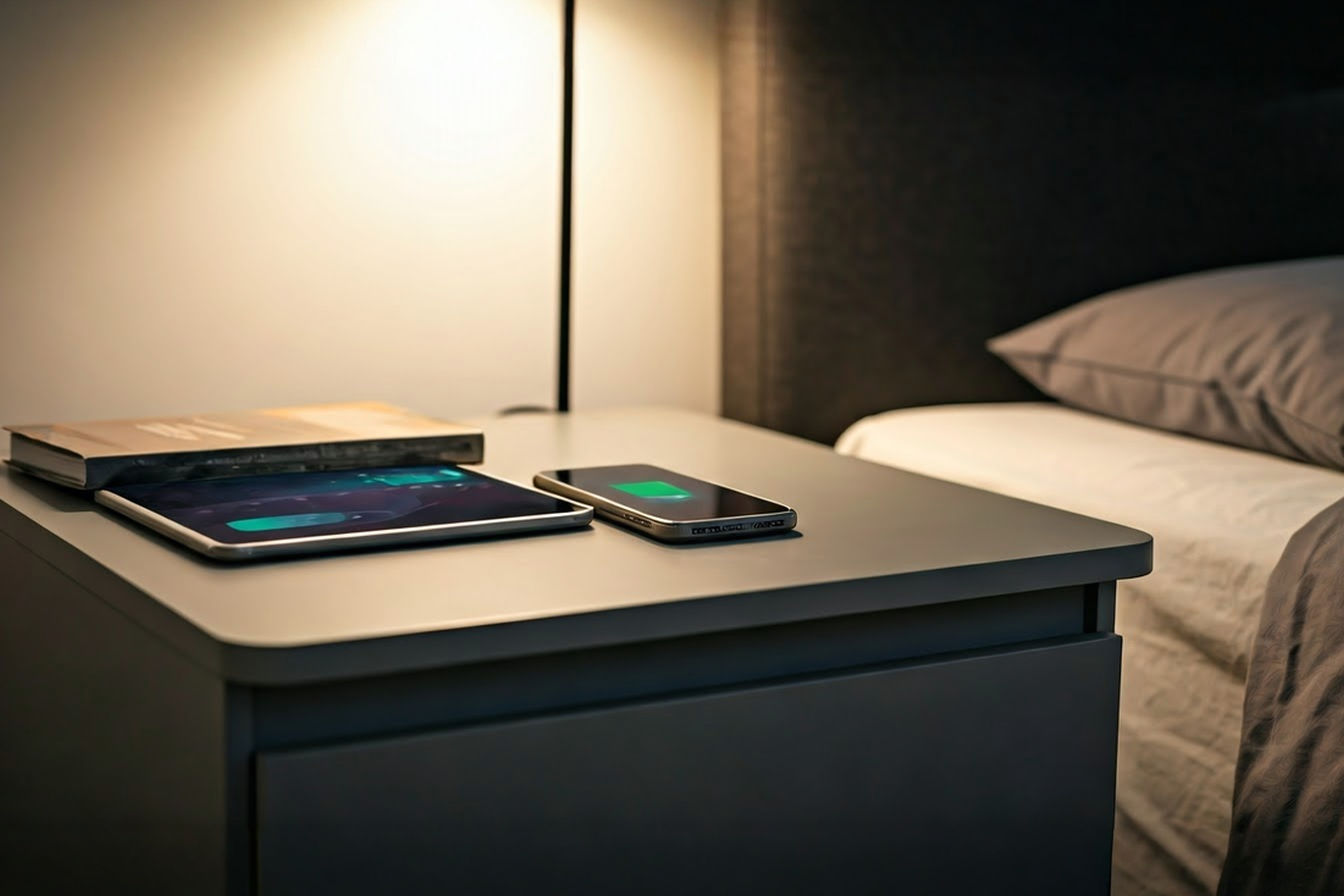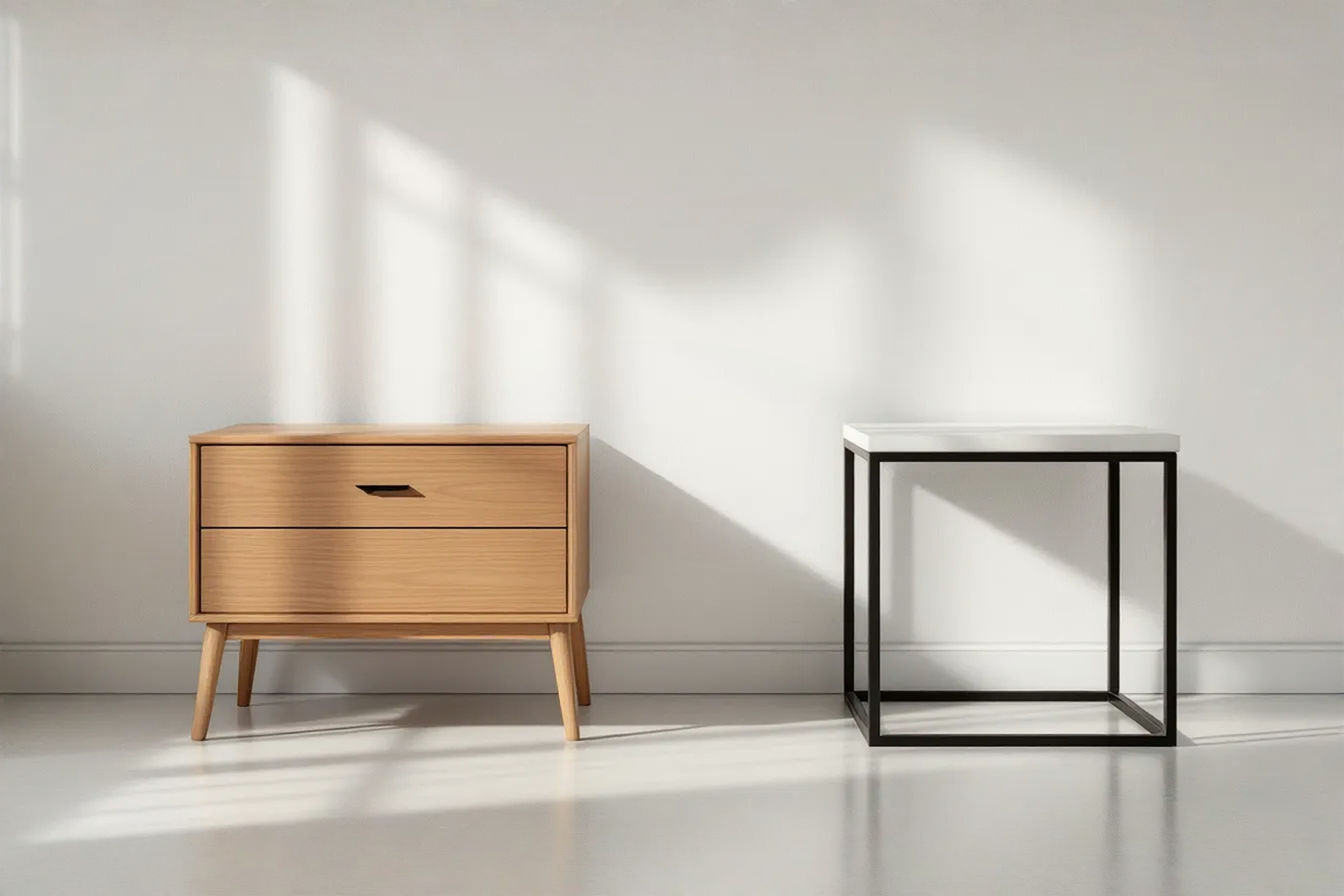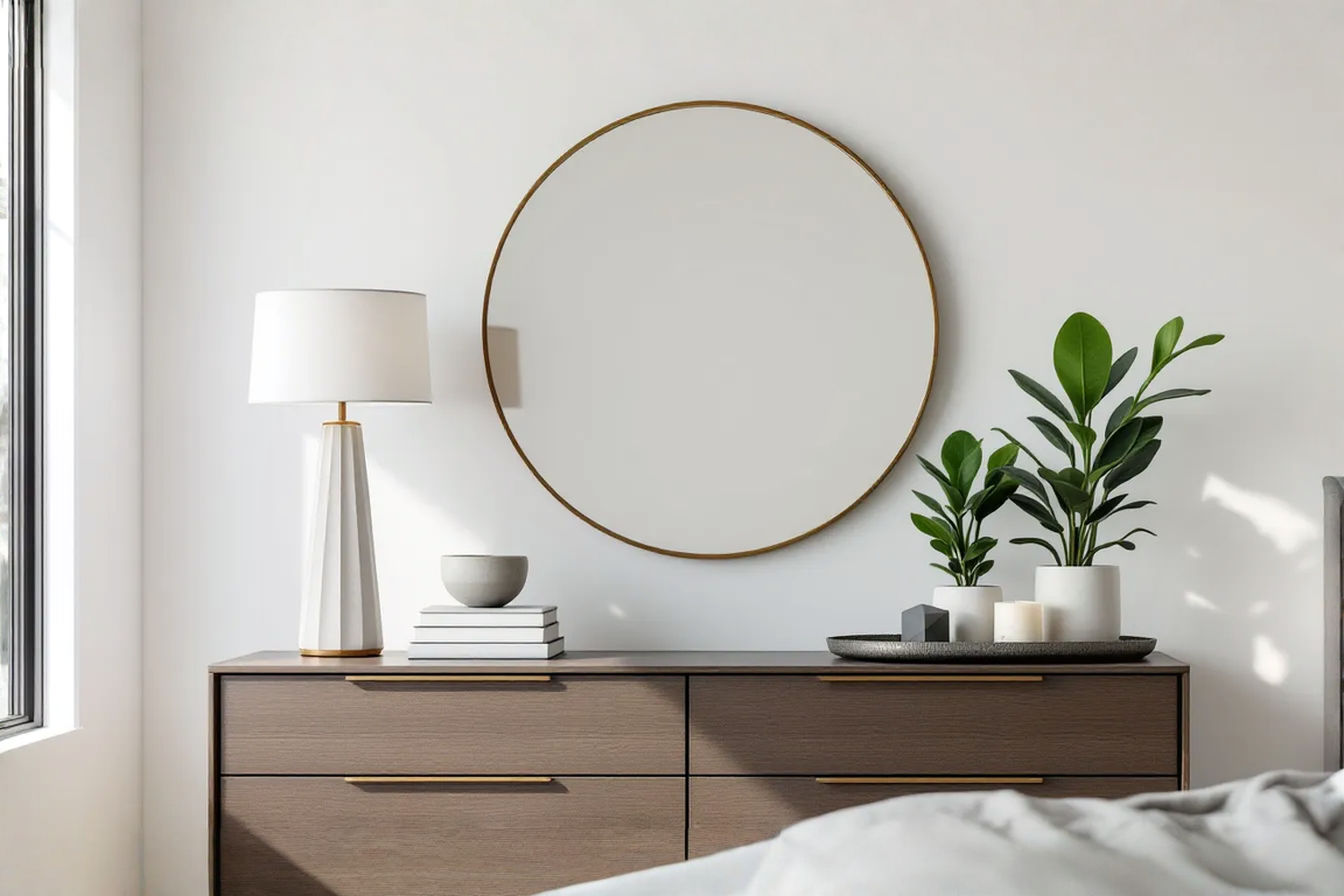How to Create the Perfect Closet for Clothes Organisation System
Tired of a messy closet? Discover the secrets to a perfectly organized wardrobe that saves you time and stress.
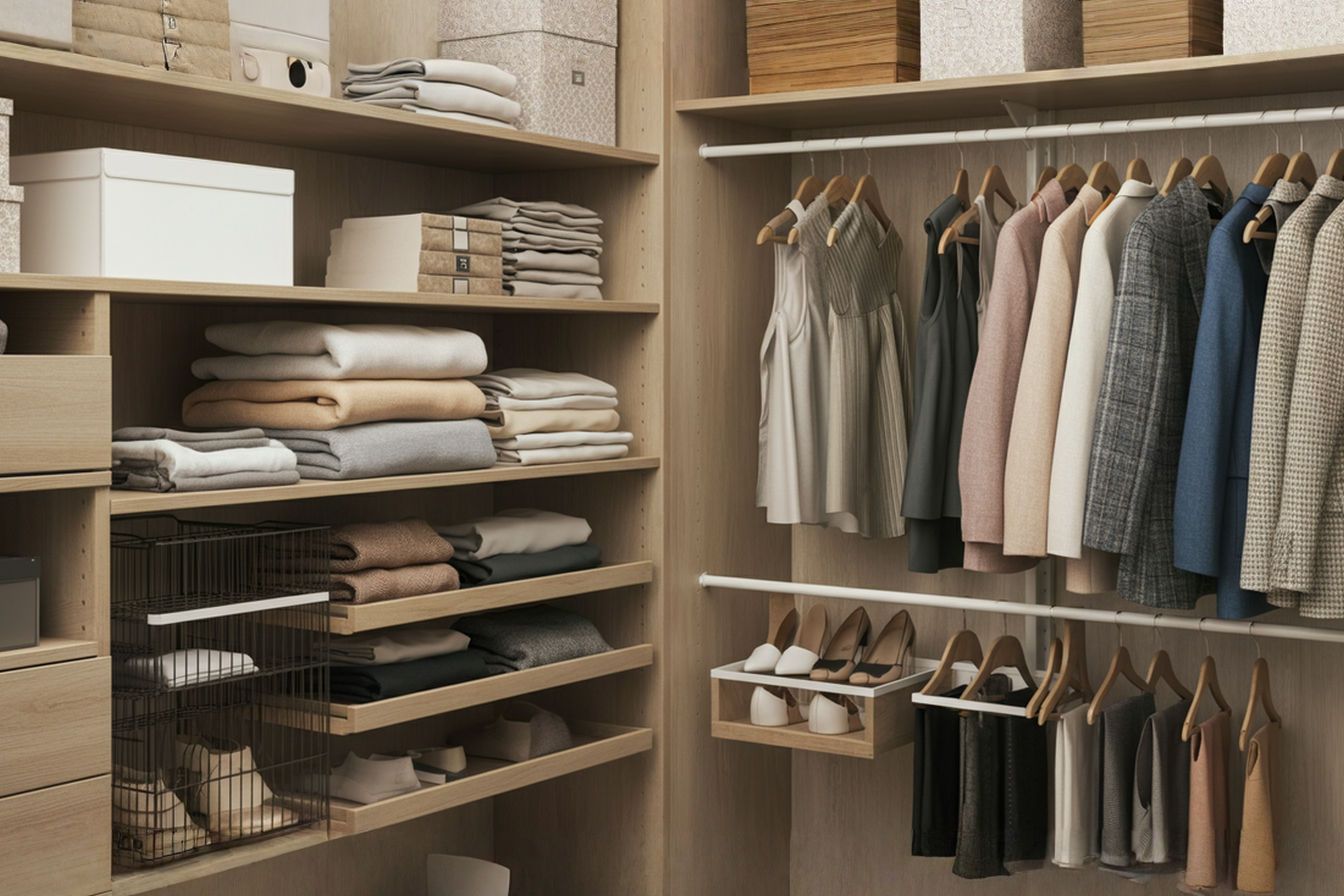
This post may contain affiliate links. If you make a purchase through these links, we may earn a commission at no additional cost to you.
Imagine opening your closet doors and instantly finding exactly what you want to wear. No more rummaging through piles, no more misplaced items, just a calm, functional space that makes getting dressed easy. This isn’t just a dream; it’s entirely achievable with the right approach to closet organization. A well-organized closet saves you time, reduces stress, and even helps you take better care of your clothes. It’s about creating a system that works for you, tailored to your space, your wardrobe, and your daily routine. Ready to transform your chaotic closet into a peaceful, efficient haven? Let’s get started.
Why a Perfect Closet Organisation System Matters
Having a well-organized closet does more than just look nice. It has practical benefits that impact your daily life. Think about the time you spend each morning deciding what to wear or searching for a specific shirt. A disorganized closet can turn this simple task into a frustrating ordeal. When everything has a designated spot, you can see all your options at a glance, making decisions quicker and easier.
Beyond saving time, organization helps preserve your clothing. Garments crammed onto hangers stretch out of shape. Items piled haphazardly on shelves get wrinkled or damaged. Proper storage methods, like using appropriate hangers or folding techniques, keep your clothes looking their best for longer. This means you save money by extending the life of your wardrobe. A tidy closet also makes it easier to spot items you no longer wear, facilitating regular decluttering and ensuring your wardrobe only contains clothes you love and use. It’s a system that supports both efficiency and mindful consumption.
Phase 1: Prepare for the Transformation
Before you can build your perfect closet system, you need to understand what you’re working with – both your space and your stuff. This preparation phase is crucial and often the most challenging part, but it lays the groundwork for lasting success. Don’t skip these steps; they are the foundation of your organized future.
Declutter Your Wardrobe Ruthlessly
This is where the real work begins. Take everything out of your closet. Yes, everything. Lay it all out on your bed, floor, or any available surface. Seeing the sheer volume of your clothing can be eye-opening. Now, go through each item one by one and make a decision. Be honest with yourself. Ask these questions:
- Do I wear this? When was the last time?
- Does it fit me well?
- Is it in good condition? (No holes, stains, or irreparable damage?)
- Do I love it? Does it make me feel good when I wear it?
- Does it fit my current lifestyle?
Create distinct piles: Keep, Donate/Sell, and Discard. Be strict with the “Discard” pile; these are items too worn or damaged to be useful to anyone else. The “Donate/Sell” pile should contain items in good condition that you no longer need or want. The “Keep” pile is what you’ll be organizing. This process can be emotionally draining, but it’s essential for creating space and clarity. You can’t organize clutter, so reducing the volume is the first critical step. Many experts recommend the “one year” rule: if you haven’t worn it in a year, it’s probably time to let it go, with exceptions for seasonal or special occasion wear.
Categorise Your Remaining Clothes
Once you have your “Keep” pile, it’s time to sort it logically. Group similar items together. Common categories include:
- Tops (T-shirts, blouses, sweaters, tank tops)
- Bottoms (Pants, skirts, shorts)
- Dresses
- Outerwear (Jackets, coats)
- Activewear
- Loungewear/Pajamas
- Accessories (Scarves, belts, ties)
- Underwear/Socks
- Shoes
Further sorting within categories can be helpful. For example, you might sort tops by sleeve length or type (casual vs. formal). Bottoms could be sorted by type (jeans, trousers, skirts). This categorization helps you understand the volume of each type of item you own and will inform how you allocate space in your closet. It also makes it easier to find specific items later. Knowing exactly how many pairs of jeans you keep, for instance, is vital for planning shelf or drawer space.
Evaluate Your Current Closet Space
Now, turn your attention to the empty closet. Clean it thoroughly – wipe down shelves, vacuum the floor, and dust the rods. Take measurements of the space: width, height, and depth. Note the location of existing shelves, rods, and any architectural features like slanted ceilings or bulkheads. Take pictures from different angles. This detailed assessment of your physical space is critical for the next phase, where you’ll design your organization system. Understanding the dimensions and limitations of your closet prevents you from buying organizers that don’t fit or planning a layout that isn’t feasible. Consider the material of your walls if you plan to install new shelving or rods; drywall requires different anchors than plaster or concrete.
Phase 2: Design Your Ideal Closet Layout
With your purged and categorized wardrobe and detailed closet measurements, you’re ready to design a system that maximizes your space and suits your needs. This phase involves planning the layout and selecting the right storage solutions.
Plan Your Closet Zones
Think about how you use your closet and the types of items you need to store. Divide your closet space into zones based on categories or frequency of use. For example:
- Hanging Zone: For items best kept on hangers (dresses, shirts, trousers, jackets). You might need different heights for long dresses versus shirts.
- Folding Zone: For items that can be folded (sweaters, t-shirts, jeans, activewear). Shelves or drawers work well here.
- Accessory Zone: For smaller items like scarves, belts, ties, and jewelry. Hooks, racks, or small bins are useful.
- Shoe Zone: Dedicated space for footwear. Shoe racks, shelves, or cubbies keep shoes organized and off the floor.
- Seasonal/Infrequent Use Zone: For items you don’t access regularly (seasonal clothing stored off-season, special occasion wear, luggage). Higher shelves or less accessible areas are suitable.
Mapping out these zones helps you visualize how your clothes will fit into the space and ensures every item has a logical home. Consider your daily routine; place frequently used items at eye level and within easy reach. Less frequently used items can go on higher shelves or in less prime real estate.
Choose the Right Closet System Type
There are several types of closet systems, ranging in complexity and cost. Your choice will depend on your budget, DIY skills, and the level of customization you need.
- Wire Systems: These are typically the most budget-friendly and easiest to install. They use wire shelving and hanging rods that attach to the wall. They offer good ventilation but some people dislike the aesthetic or find that delicate items snag on the wires. They are highly adjustable, allowing you to change shelf heights and configurations relatively easily. The material is usually coated steel, providing durability.
- Laminate/Melamine Systems: These offer a more built-in look and feel. They use particleboard or MDF (Medium-Density Fiberboard) with a laminate or melamine coating. They are sturdier than wire systems and provide a solid surface for folding. Installation is more involved, often requiring cutting pieces to size and using tools like drills and levels. They offer a wide range of components like drawers, shelves, and cabinets. The coating provides a smooth, easy-to-clean surface.
- Solid Wood Systems: The most premium option, offering durability, strength, and a beautiful aesthetic. These are often custom-built and can be the most expensive. They provide the highest level of customization and can be designed to fit unusual spaces perfectly. Wood requires proper sealing or finishing to protect against moisture and wear. Different wood types offer varying levels of strength and appearance, from cost-effective pine to luxurious hardwoods like maple or cherry.
- Free-Standing Units: Wardrobes, armoires, and modular units that don’t attach to the wall. These are great for renters or if you prefer not to make permanent changes to your space. They offer flexibility as they can be moved. They come in various styles and sizes, but you are limited by the pre-set configurations. Materials vary widely, from metal and fabric to solid wood.
Consider your budget, the weight of the clothes you need to store, and the desired aesthetic when choosing a system type. A combination of types might even work best for a truly customized solution. For instance, you might use a wire system for the main hanging area and add a free-standing drawer unit for folded items.
Design the Layout Based on Your Wardrobe
Using your categorized piles and closet measurements, sketch out your ideal layout. Allocate space for each category based on its volume.
- Hanging Space: Measure the height needed for different garment types. Long dresses and coats require full-height hanging. Shirts, blouses, and folded trousers can often fit in a double-hanging configuration (one rod above another), effectively doubling your hanging capacity in that vertical space. Standard rod height for single hanging is typically around 65-70 inches from the floor, while double hanging might place rods at around 40 inches and 80 inches from the floor, though this can be adjusted based on ceiling height and garment length.
- Shelving: Determine how many shelves you need for folded items, shoes, and accessories. Consider the height between shelves; you want enough space to easily access items without crushing them. Adjustable shelves offer the most flexibility. For folded items like sweaters, shelves around 10-12 inches apart usually work well. Shoe shelves might be angled or flat, with spacing adjusted for different shoe types (boots vs. flats). The material of the shelves is important for weight bearing; thicker or reinforced shelves can hold more.
- Drawers: Drawers are excellent for items you don’t want to hang or place on open shelves, like underwear, socks, pajamas, and activewear. They keep items tidy and dust-free. Consider the depth and width of drawers needed for your items. Drawer slides (the mechanisms that allow drawers to open and close) come in various types, including epoxy-coated steel slides (basic), ball-bearing slides (smoother operation, higher weight capacity), and soft-close slides (premium, quiet operation).
- Accessories: Plan for hooks for belts and scarves, tie racks, jewelry organizers, and other small item storage. Utilize vertical space on the back of the door or side walls.
Draw your plan to scale if possible. This helps you visualize how the components will fit and ensures you utilize every inch effectively. Many closet system companies offer free design services or online tools to help you plan. Thinking about the flow of getting dressed can also inform your layout – placing frequently paired items near each other can streamline your morning routine.
Phase 3: Select and Install Organisation Components
Once your design is ready, it’s time to acquire and install the physical components that will bring your perfect closet to life.
Choose the Right Hangers
Believe it or not, hangers make a huge difference. Using consistent hangers creates a visually appealing and uniform look, but more importantly, the type of hanger affects how your clothes hang.
- Wire Hangers: Avoid these if possible. They are cheap but can cause shoulders to stretch out of shape and offer poor grip, leading to clothes slipping off.
- Plastic Hangers: Better than wire, but quality varies. Look for sturdy ones that don’t bend easily. They are lightweight and inexpensive.
- Velvet/Non-Slip Hangers: Excellent for preventing clothes from slipping, especially wide-neck tops or delicate fabrics. They are thin, which helps save space on the rod, but they can make it slightly harder to pull clothes off quickly. The flocking material provides the necessary friction.
- Wooden Hangers: Sturdy, durable, and provide a premium look. They are best for heavier items like suits, jackets, and coats as they help maintain the garment’s shape. However, they take up more space on the rod than velvet or plastic hangers. Different wood types like cedar also offer moth-repelling properties.
- Specialty Hangers: Designed for specific items like skirts (with clips), pants (clamp or multiple bar), belts, and ties. Using these helps keep accessories organized and wrinkle-free.
Invest in good quality hangers that are appropriate for your clothing. Aim for consistency in hanger type and color for a clean, organized look. The material composition of the hanger (e.g., type of plastic polymer, wood density) directly impacts its strength and longevity.
Select Shelving and Drawer Solutions
Based on your layout design, choose the shelving and drawer units that fit your space and budget.
- Adjustable Shelving: Opt for systems with adjustable shelves if possible. This allows you to change the height between shelves as your storage needs evolve. The adjustment mechanism typically involves pins or clips that fit into pre-drilled holes or slots on the vertical supports. The load-bearing capacity of a shelf is determined by its material, thickness, and the support mechanism; a thicker laminate shelf on sturdy brackets can hold more weight than a thin wire shelf.
- Drawer Units: Choose drawer units that fit within your planned zones. Consider whether you want open shelves with bins that act like drawers or dedicated drawer units with slides. Drawer boxes are commonly made from particleboard, MDF, or solid wood, with different joint types (butt joints, dado joints, dovetail joints) affecting durability. The drawer slides, as mentioned earlier, significantly impact function and weight capacity.
- Bins and Baskets: Even with shelves and drawers, bins and baskets are invaluable for containing smaller items or grouping similar things on shelves. Use them for socks, underwear, scarves, activewear, or seasonal accessories. Clear bins let you see the contents easily, while opaque bins offer a cleaner look. Look for bins made from durable materials like plastic, fabric, wire, or natural fibers. The dimensions of the bins should fit snugly on your shelves or within your drawers to maximize space utilization and prevent shifting.
Ensure the materials and construction of the shelving and drawer units are robust enough to hold the weight of your clothes. Check weight capacity specifications provided by the manufacturer, typically measured in pounds per linear foot or per shelf. Proper installation, using appropriate wall anchors for the type of wall material, is critical for safety and stability.
Incorporate Accessory Storage
Accessories can quickly become clutter if they don’t have a designated spot. Integrate specific storage solutions for these items.
- Hooks: Simple hooks on the back of the door or walls are great for robes, belts, scarves, or even frequently worn handbags. Different hook styles are available, from single hooks to multi-hook racks. The load capacity of a hook depends on its material and how it’s mounted to the wall.
- Tie and Belt Racks: These specialized racks keep ties and belts neat and prevent them from slipping. They can be mounted on the wall or the back of the closet door, or some hang directly on the closet rod. Materials range from metal to wood or plastic.
- Jewelry Organizers: For jewelry stored in the closet, consider wall-mounted organizers, hanging jewelry bags, or small drawer inserts with compartments. These prevent tangling and make it easy to see your options. Materials include fabric, plastic, or wood, often with soft linings to protect delicate items.
- Scarves: Scarf hangers with multiple loops or rings keep scarves organized and visible. Alternatively, they can be folded neatly into bins or drawers.
Think vertically when planning accessory storage to utilize often-wasted space. The key is to make these items accessible and visible so you remember to wear them.
Plan Your Shoe Storage
Shoes can take up a lot of space and create clutter on the floor. Dedicated shoe storage is essential.
- Shoe Racks: Free-standing or stackable racks are a popular option. They come in various sizes and materials (metal, plastic, wood). Consider the number of shoes you have and the types (boots vs. flats) when choosing the height and depth of the rack. Wire racks offer ventilation, while solid shelves might be easier to clean.
- Shoe Shelves: Building or installing shelves specifically for shoes provides a clean, built-in look. Angled shelves can display shoes nicely, while flat shelves are more versatile for different shoe types or even storing shoe boxes. The spacing between shelves should accommodate your tallest pair of shoes.
- Shoe Cubbies: Individual compartments for each pair of shoes keep them separated and tidy. These can be part of a larger closet system or stand-alone units. Cubbies are great for maintaining order but can take up more horizontal space than open shelves or racks. The material is typically laminate or wood.
- Over-the-Door Shoe Organizers: A great space-saving solution, particularly for smaller closets. These typically have fabric or plastic pockets and hang on the back of the closet door. They are best for lighter shoes like flats, sandals, or sneakers. The weight capacity is limited by the strength of the door and the organizer’s hooks.
Choose a shoe storage solution that fits the volume and type of your footwear collection and the available space in your closet. Keeping shoes off the floor makes the closet feel tidier and makes cleaning easier.
Phase 4: Organize and Maintain Your Perfect Closet
With the system installed, it’s time to put your clothes back in and establish habits to keep it that way.
Place Items Strategically
Now, put your categorized clothes back into your newly organized closet, placing them in their designated zones.
- Hang: Hang items that wrinkle easily or hold their shape better on hangers. Group them by type (shirts, dresses, pants) and then, if you like, by color or season for easy visual scanning. Ensure there’s enough space between hangers so garments aren’t crushed. The weight distribution on the rod is important; heavier items should be evenly distributed.
- Fold: Fold items that don’t wrinkle easily or are bulky, like sweaters, t-shirts, jeans, and activewear. Fold them neatly and consistently to maximize space on shelves or in drawers. Techniques like the KonMari vertical folding method can save significant space and allow you to see every item in a drawer at a glance. The principle behind vertical folding is reducing the item’s footprint and stacking vertically rather than horizontally, which prevents items at the bottom of a pile from being forgotten.
- Containerize: Use your bins and baskets for smaller items like socks, underwear, and accessories. This prevents them from becoming a messy pile and keeps them contained within their zone. Labeling bins can be helpful, especially for items you don’t access daily. The material of the container affects its breathability and durability; wire or fabric bins allow for more air circulation than solid plastic.
Place frequently used items in the most accessible areas (eye level, front of the closet). Less frequently used items can go on higher shelves or in deeper storage. This strategic placement saves you time and effort during your daily routine.
Implement Folding and Hanging Techniques
Consistent techniques are key to maintaining order.
- Folding: Master a few folding techniques for different garment types. The goal is a neat, compact fold that allows items to be stored efficiently on shelves or in drawers. For t-shirts, a simple tri-fold works well. For bulkier sweaters, a flatter fold might be better to prevent stretching. Consistency in folding size makes stacking neater.
- Hanging: Use the appropriate hanger for each garment type. Button shirts and zip jackets to help them maintain their shape. Hang pants either folded over a hanger bar or using clip hangers. Skirts should be hung with clip hangers at the waistband. Ensure garments are fully on the hanger and not dragging on the shelf or floor below. The material and design of the hanger (e.g., contoured vs. straight) play a role in how well it supports the garment’s structure.
Teaching yourself and anyone else who uses the closet these consistent methods is vital for long-term organization success.
Maintain Your Organisation System
Organization isn’t a one-time event; it’s an ongoing process. Establish habits to keep your closet tidy.
- Put Things Away Immediately: The simplest rule, but the most effective. When you take something off, decide if it’s dirty (laundry hamper) or clean (put it back in its place). Don’t let clothes accumulate outside their designated spots.
- Regular Mini-Declutter Sessions: Don’t wait until your closet is overflowing again. Spend 15-30 minutes each month or season doing a quick pass through your wardrobe. Remove items you haven’t worn or no longer need. This prevents clutter from building up.
- One In, One Out Rule: For certain categories (like basic t-shirts or jeans), consider adopting a “one in, one out” rule. When you buy a new item, donate or discard an old one. This helps control the volume of your wardrobe. This rule is a practical application of managing inventory levels to prevent overstocking.
- Seasonal Swaps: If you have limited space, consider rotating seasonal clothing. Store off-season items in bins or garment bags on high shelves or in another storage area (under the bed, in the attic/basement). This frees up prime real estate for the clothes you’re currently wearing. Ensure seasonal storage is in a cool, dry place to prevent damage from moisture or pests. Using airtight containers or vacuum-seal bags can provide extra protection.
Consistency is key. Spending a few minutes regularly to maintain order is much easier than tackling a massive disorganization project later.
Phase 5: Advanced Closet Optimisation
Once you have a functional system, you can explore more advanced techniques to make your closet truly perfect.
Maximise Vertical Space
Often, the space above and below existing shelves or rods is underutilized.
- Stackable Shelves or Drawers: Add stackable units on existing shelves to create more layers for folded items or bins. These units are typically lightweight and easy to assemble. The stacking mechanism usually involves interlocking feet or simple peg systems.
- Hanging Organizers: Use hanging shelves or shoe organizers that attach to the rod to add vertical storage within the hanging area. These are great for items like sweaters, handbags, or shoes. They are usually made of fabric or canvas stretched over a frame. The weight capacity is limited by the strength of the fabric and the rod itself.
- High Shelves: Utilize the space near the ceiling for storing items you access infrequently, like seasonal clothing, luggage, or sentimental items. Use sturdy bins or boxes with labels. Ensure these shelves are secure and can handle the weight of the stored items. Accessing these areas might require a step stool.
Thinking upwards can significantly increase your storage capacity without expanding the closet’s footprint. The structural integrity of the closet walls and the chosen system are critical when adding vertical load.
Improve Lighting
Good lighting makes a huge difference in a closet. It helps you see your clothes clearly and makes the space feel more inviting.
- Add Fixtures: If your closet lacks built-in lighting, consider adding a simple ceiling fixture. Ensure it’s appropriate for closet use (check local building codes regarding enclosed spaces and heat). LED lights are a good option as they are energy-efficient and don’t emit much heat, reducing the risk of damage to clothing. The lumen output and color temperature of the bulb affect visibility and how colors appear.
- Battery-Operated Lights: For a quick and easy solution, use battery-operated stick-on lights or motion-sensor lights. Place them on shelves or inside drawers to illuminate dark corners. These use adhesive backing for easy installation and are a low-voltage solution. The lifespan of the batteries depends on usage frequency.
- Natural Light: If your closet has a window, keep it unobstructed to allow natural light in. Natural light is the best for seeing true colors. However, be mindful of direct sunlight, which can fade fabrics over time. UV protective film on the window can mitigate this risk.
Proper lighting not only improves functionality but also makes the closet a more pleasant space to be in. The angle and diffusion of light sources affect how shadows are cast and how well details are visible.
Add Personal Touches
Make your closet a space you enjoy being in.
- Paint or Wallpaper: A fresh coat of paint or some attractive wallpaper can transform the look and feel of your closet. Choose light colors to make the space feel brighter and larger. Ensure the paint or wallpaper is suitable for interior use and has low VOC (Volatile Organic Compounds) to avoid off-gassing in an enclosed space with fabrics.
- Mirror: A full-length mirror is practical for checking your outfit and can also make a small closet feel bigger by reflecting light and space. Position it where it’s most useful for dressing. The placement can also impact the perceived depth of the space.
- Rug: A small rug can add comfort and style to a walk-in closet. Choose a material that is easy to clean and doesn’t shed excessively. The rug’s texture and color can add a layer of visual interest.
- Decor: Add a small plant (if there’s natural light), a piece of art, or a decorative tray for jewelry or perfumes. These small touches can make the space feel more personal and inviting. Ensure any decorative items don’t obstruct access to your clothes.
These personal touches turn a functional storage area into a pleasant part of your home. The psychological impact of being in a visually appealing and organized space can positively affect your mood and routine.
Conclusion: Enjoy Your Organised Oasis
Creating the perfect closet organization system is an investment of time and effort, but the rewards are significant. You’ll save time getting ready, reduce stress, extend the life of your clothes, and have a beautiful, functional space. Start with decluttering, plan your layout carefully, choose the right components, and establish simple maintenance habits. Whether you have a spacious walk-in or a small reach-in, a well-designed system can transform your closet from a source of frustration into an organized oasis. Take it one step at a time, and celebrate your progress along the way. Enjoy the feeling of calm and control that comes with knowing exactly what you own and where everything is. Your perfect closet awaits!

